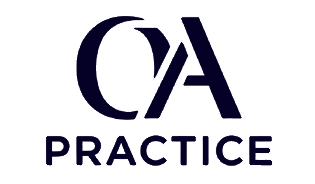D425 Introduction to Chemistry - Set 1 - Part 1
Test your knowledge of technical writing concepts with these practice questions. Each question includes detailed explanations to help you understand the correct answers.
Question 1: A laboratory technician needs to separate salt from seawater for analysis. Which separation technique would be most appropriate considering the dissolved nature of salt and the need to recover both components intact?
Question 2: When sugar dissolves in hot coffee, the sugar molecules distribute evenly throughout. What type of change occurs and why does stirring speed up this process without altering the final outcome?
Question 3: A student observes that oil floats on water in a beaker. Which property best explains this phenomenon and how would adding detergent affect the interaction between these two liquids?
Question 4: In measuring reaction rates, scientists often need precise time intervals and temperature readings. Which aspect of measurement would be most critical for ensuring reproducible results across different laboratories worldwide?
Question 5: An atom consists of protons, neutrons, and electrons arranged in specific patterns. Which statement best describes the relationship between atomic structure and the chemical properties of an element?
Question 6: When atoms form ionic bonds, electrons transfer from one atom to another creating charged particles. What drives this electron transfer and determines which element loses versus gains electrons during bond formation?
Question 7: Covalent bonds form when atoms share electrons rather than transferring them completely. In which scenario would covalent bonding be most likely to occur between two atoms in a molecule?
Question 8: The mole concept allows chemists to count particles by weighing substances. How does this mathematical relationship help scientists predict the amounts of reactants needed for a specific chemical reaction?
Question 9: Chemical equations must be balanced to follow conservation laws. When balancing equations, what fundamental principle ensures that the same elements appear on both sides in equal quantities?
Question 10: Stoichiometry calculations help determine product yields from given reactant amounts. What information from a balanced equation directly indicates the proportional relationship between reactants and products in a reaction?
Question 11: Solutions form when solutes dissolve in solvents creating homogeneous mixtures. Which factor most significantly affects how quickly a solid solute dissolves in a liquid solvent at constant pressure?
Question 12: Acids and bases exhibit opposite chemical behaviors in aqueous solutions. When an acid reacts with a base, what type of reaction occurs and what products typically form?
Question 13: Chemical equilibrium occurs when forward and reverse reaction rates equal each other. What happens to concentrations of reactants and products once a system reaches equilibrium at constant temperature?
Question 14: Gas behavior follows predictable patterns under various conditions. According to kinetic molecular theory, what happens to gas particle motion when temperature increases at constant volume?
Question 15: Periodic table organization reveals patterns in element properties. Elements in the same vertical column share similar characteristics because they have what structural feature in common?
Question 16: Dimensional analysis helps convert between different units of measurement. When converting grams to moles for a chemical calculation, what additional information must you know about the substance?
Question 17: Electron configurations determine how electrons fill atomic orbitals. What principle explains why electrons occupy lower energy orbitals before filling higher energy ones in neutral atoms?
Question 18: Limiting reactants determine maximum product amounts in reactions. How can you identify which reactant limits product formation when given initial amounts of multiple reactants?
Question 19: Molecular geometry affects physical and chemical properties of compounds. What determines the three-dimensional shape of molecules around a central atom according to modern bonding theories?
Question 20: Phase changes involve transitions between solid, liquid, and gas states. During melting, what happens at the molecular level that allows a solid to become liquid?
Need Guaranteed Results?
Our exam support service guarantees you'll pass your OA on the first attempt. Pay only after you pass!
Get Exam Support